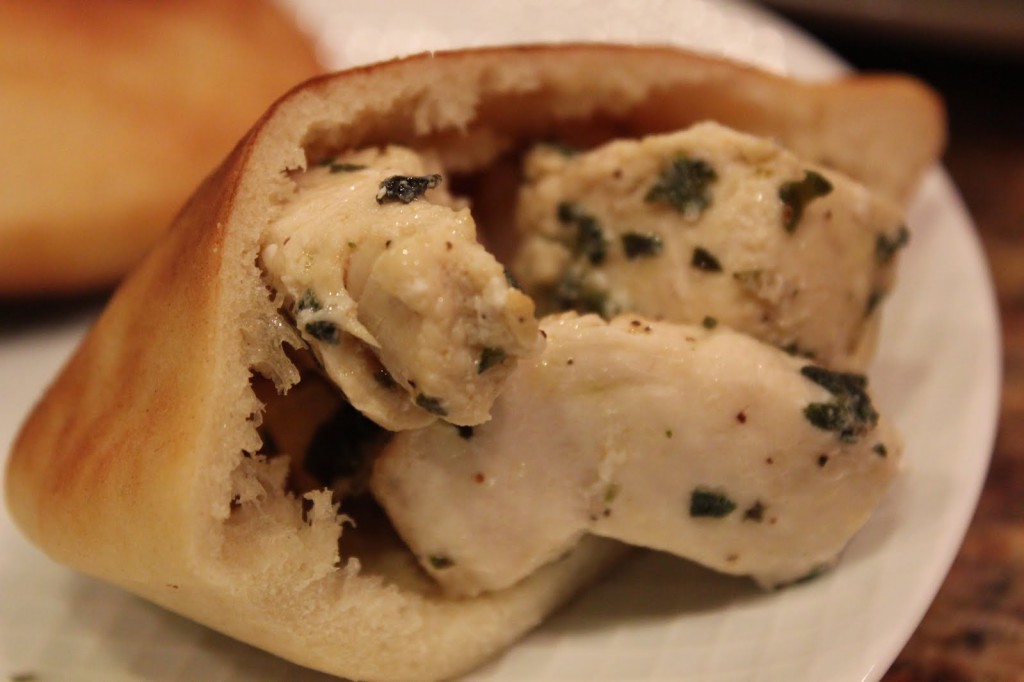I thought it was unexciting but decent. I added a little oil since I had some recipes that had some oil in them. I made them earlier in the day so they could totally cool before we needed them.
Pita bread is another ancient flat bread made from the same sort of dough that pizza and focaccia is. It’s the way it’s baked that creates the pocket. Here’s a recipe for the kind of pita you’ll find on the grocery shelf. (For those of you who are aficionados of whole wheat flour, you can substitute 1 or 2 cups of King Arthur Traditional Whole Wheat Flour for an equal amount of King Arthur Unbleached All-Purpose Flour (just remember to put the whole wheat flour in the sponge).
Ingredients
- 2 cups warm water
- 1 tablespoon granulated sugar
- 1 packet or scant tablespoon active dry yeast
- 5 1/2 to 6 1/2 cups King Arthur Unbleached All-Purpose Flour
- 1 scant tablespoon salt
Directions
Pitas are best made ahead of time so they’ll have a chance to cool and deflate before you fill them. So if you’re going biking or hiking on the weekend, you’ll probably want to make them up during the week.
If you work away from home during the day or even if you work at home, you can make up a sponge, with about half the flour. Dissolve the yeast and sugar in the warm water. Add 1/4 cup of the all-purpose flour. Stir with a whisk and let sit for 10 minutes to give the yeast a chance to get going. When you get back to the sponge later on, add the salt and enough flour to make a dough that is a bit stiff, one that you can easily knead by hand.
Turn the dough out of the bowl onto a floured surface and knead it until it is smooth and bouncy, adding only enough more flour to keep it from sticking to the board or you. Give it a rest for about 5 minutes to relax the gluten and make it more cooperative about being shaped. Divide the dough into 8 pieces. Flatten each piece with your hand and then roll each piece with a floured rolling pin, or a pin with a cover, on a floured surface into a circle about 6-inches in diameter and 1/8-inch thick. You may need to let the pieces rest occasionally to relax the dough.
Sprinkle baking sheets with cornmeal, and place two circles on each. Or place circles on pieces of parchment paper. Let the dough circles rest here for at least 15 minutes while you preheat your oven to a hot 500°F.
When the pita circles have finished resting, place the baking sheet on the oven bottom or, if this is not possible, on the lowest rack. If you’re using a baking stone, make sure it’s on the oven floor, or on the lowest rack. Use a peel to transfer the pitas-on-parchment to the stone. Close the oven door and keep it shut for 1 minute. Don’t peek or the pocket may not form. It’s this initially fast, hot searing of the outside dough of the pita that makes it separate from the inside. The carbon dioxide gas created by the yeast expands inside and accentuates the separation until the pita blows up like a balloon and the pocket is created.
At the end of the minute, place the sheet on a rack higher in the oven and continue baking anywhere from 3 to 7 minutes, until the pitas have blown up into balloons and are lightly browned. If the pitas baked right on the stone, you’ll probably want to transfer them to a baking sheet, which is already in place on the oven rack, for this second part of their baking. When they’re done, remove the baking sheet from the oven, slide the pitas off and let them cool. They will probably deflate somewhat after cooling. Once they’re thoroughly cool you can press more air out of them so they take up less storage room.

